Workshop Ⅱ Carrying on the legacy of hibakusha – learning from, and transmitting, the thoughts of nuclear victims
Outline: Part 1 is a symposium featuring foreign peace activists, hibakusha, and third-generation hibakusha. They will share their thoughts about carrying on the legacy of the first-generation hibakusha and exchange their views with people in the audience. Part 2 will take place in an exhibition space dedicated to small organizations and individuals involved in activities for carrying on the legacy of hibakusha. This is a small-group environment where people can share thoughts that they could not discuss during Part 1.
Coordinators
 |
Ms. Yumiko Masumoto Japan, Director, IkiIki Welfare Co-op |
 |
Ms. Mutsuko Yoshida Japan, Group Leader, International Exchange Group, Nagasaki Foundation for the promotion of Peace |
Susan Southard USA, Author, Nagasaki : Life After Nuclear War, Nagasaki Peace Correspondent
Kathleen Sullivan USA, Director, Hibakusha Stories, Nagasaki Peace Correspondent, Education consultant to the United Nations office for Disarmament Affairs
Takashi Kado Japan, Hibakusha
Sawa Yamanishi Japan, third generation Hibakus
Workshop Ⅱ Part1部
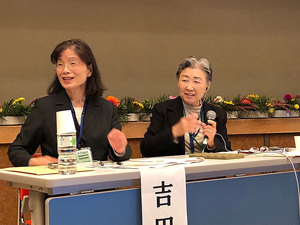 |
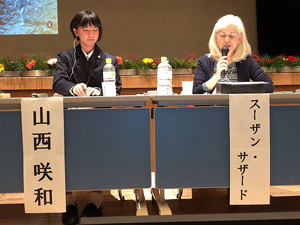 |
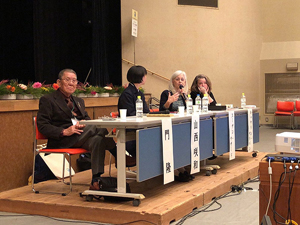 |
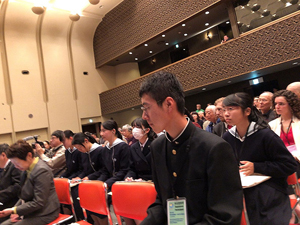 |
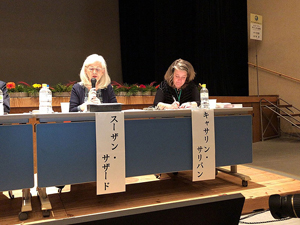 |
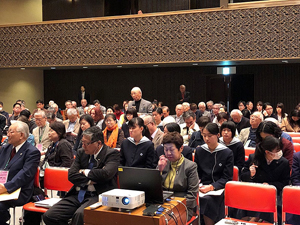 |
Workshop Ⅱ Part2
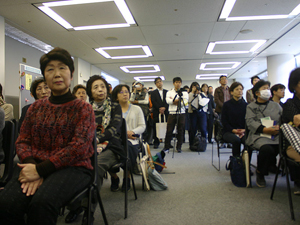 |
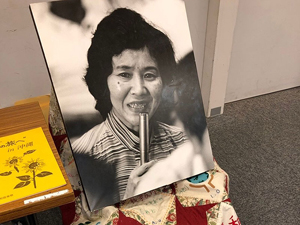 |
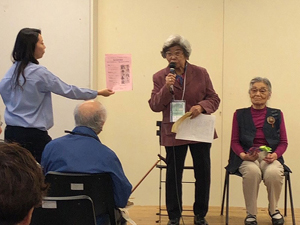 |
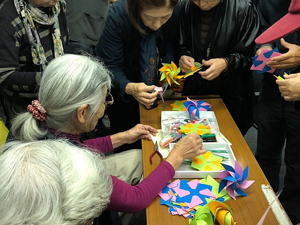 |
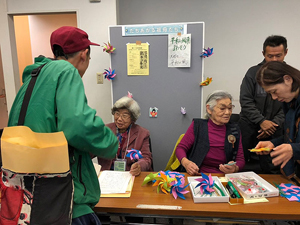 |
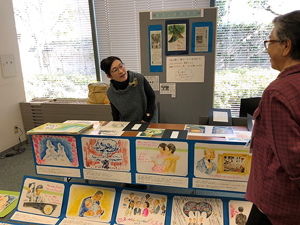 |
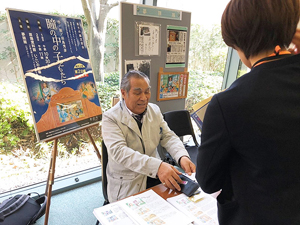 |
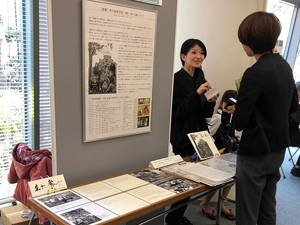 |
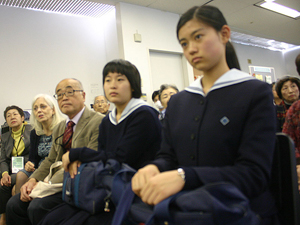 |
What we tried to achieve in workshop 2 was to explore together methods for learning from the thoughts of
Hibakushas and propagating their thoughts and to do that first what we tried to do at a preparatory stage is
to find and uncover those Hibakushas who have not talked about their experiences in public yet.
We also aim to have a workshop where people could casually drop in and simply say letʼs see, maybe –
perhaps there is something I too can do and so forth. Also we invited guests from overseas because we
thought that their viewpoint different from the Japanese may have more appealing power.
The first speaker was Mr. Takashi Kado. This was the first time for him to talk about his experience.
Kadosan was 9 years old and he was 3.5 kilometers away from the hypocenter. He was a family of six; father,
mother, two older brothers, one older sister, six all together and except four, the older brother the eldest
brother who was a solider all five of the family members were exposed to this atomic bombing.
The father was exposed to the radiation at 1.2 kilometers from the hypocenter and another older brother
who was killed, who was 600 meters from the hypocenter, he was at school he also died and Kado-san and
his mother went to look for the two of them – to look for the older brother and so the devastated city that
was used to be Nagasaki. He saw many bodies, dead bodies and then when his father came home he was
all in bandage, the white bandage and he suffered so much with severe burns and then another brother who
just had severe burns and wanting to have last drop of water, drinking water. He too died and these are
some shocking memories from his past.
Second speaker was Yamanishi-san, the third generation Hibakusha and she worked as a peace messenger.
She works still and she talked about her thoughts. She first heard about her grandmotherʼs experience in
June this year and she was so shocked to hear that and she said, she thought no one should ever experience
what her grandmother had gone through and so she started to work and narrate the atomic bombing
experiences that her grandmother had gone through and that she realized also the peace is not something
that somebody will create for you. You have to really work for it yourself and if you think about peace
with great deal of interest your landscape will change and you will find something that you can do.
The third speaker was Susan Southard, ʻNagasaki: Life After Nuclear Warʼ the realities of nuclear bombing
because she thought it would serve as nucleus for the movement for nuclear aberration. So, she thought
that it was essential that we imprint in peopleʼs mind this memory of the atomic bombing.
So, many people
who read her book or who saw her and talked to her and she did too and through this she began to realize
that there are still mountains of things that she must do.
There are so many people who really having one sided views or information and so many countries have
no ears to listen to different opinions. What we need is that for in order to secure safety you have to
change peopleʼs mind by talking about this nuclear explosion experiences. It becomes a living experience
for all the people who listen to these stories that bombs are not simply abstract things that you have to
listen to the voice or the stories of various people step by step they can begin to understand the different
value systems or views and they begin to realize that this nuclear deterrence is logically and morally have
some big serious flaws and in the end the nuclear deterrence theory will began to seem as something totally
meaningless and Susan appeals to all the activists in Hibakusha that Nagasaki should become the last place
to have been bombed by the atomic bomb.
The last speaker was Kathleen Sullivan and she talked about her way of living or transmitting the legacy of
Hibakusha through various art forms like philharmonic concert, the concert by Choir, group Himawari and
atomic bomb panels by Maruki Toshi and Iri and then dancing in front of those panels, the performances
and for 7 days she also conducted disarmament education program and some 100 of students from New
York participated in it and Pioneer Works, an organization made exhibition of relics of atomic bombing
from Hiroshima and Nagasaki and several workshops were held. She had a strong response from the
students. She also makes films, takes photographs and also introduces Susanʼs books wherever she has the
opportunity.
When we conducted disarmament activities itʼs important for people to think about those that you love and
you donʼt want to lose and then to be reminded in 1945 those people who you loved or those places you
loved were suddenly taken away from you. Itʼs important for people to feel how that is. We had exchange
of views with the people, with the audience which deepened our understanding and also we had exhibit
space later on for further stepping up exchange, a very happy exchange of views in this case.
